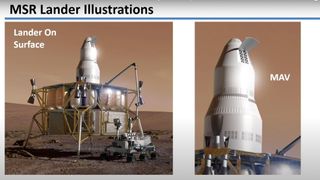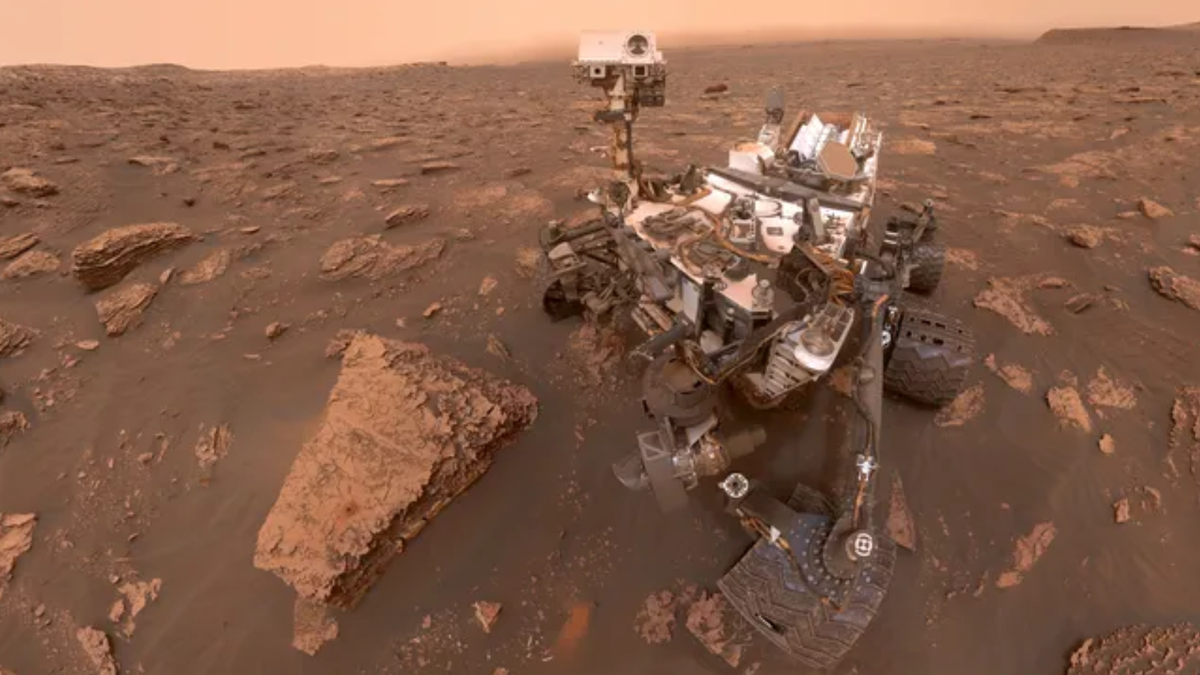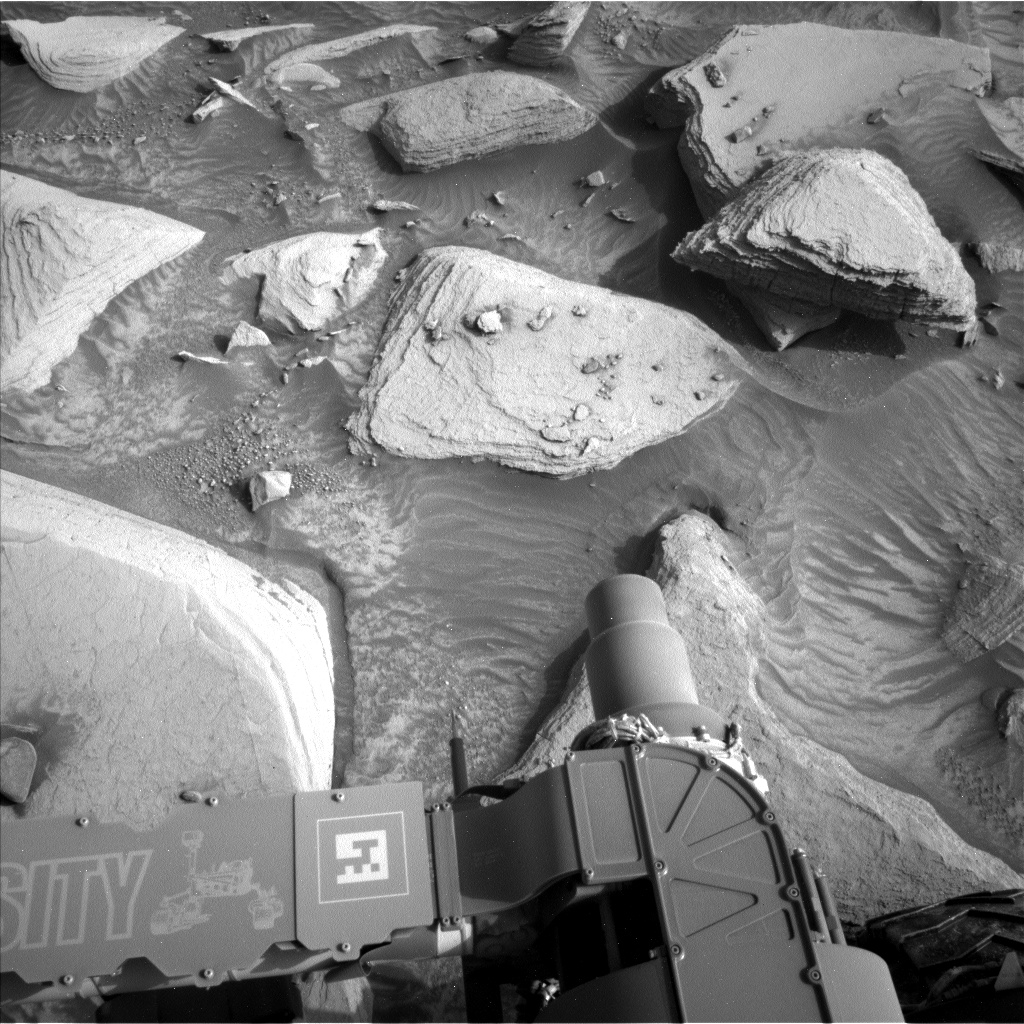NASA’s Odyssey spacecraft, the longest-running mission at Mars, circled the Red Planet for the 100,000th time today, the mission team announced in a statement. To celebrate the milestone, the space agency released an intricate panorama of Olympus Mons, the tallest volcano in the solar system; Odyssey captured the view in March. The volcano’s base sprawls 373 miles (600 kilometers) near the Martian equator while it soars 17 miles (27 kilometers) into the planet’s thin air. Earlier this month, astronomers discovered ephemeral morning frost coating the volcano’s top for a few…
Read MoreTag: Mars
NASA’s Mars Odyssey Captures Huge Volcano, Nears 100,000 Orbits
5 min read Preparations for Next Moonwalk Simulations Underway (and Underwater) NASA’s 2001 Mars Odyssey orbiter captured this single image of Olympus Mons, the tallest volcano in the solar system, on March 11, 2024. Besides providing an unprecedented view of the volcano, the image helps scientists study different layers of material in the atmosphere, including clouds and dust. NASA/JPL-Caltech/ASU The 23-year-old orbiter is taking images that offer horizon-wide views of the Red Planet similar to what astronauts aboard the International Space Station see over Earth. NASA’s longest-lived Mars robot is…
Read More‘We thought it was impossible:’ Water frost on Mars discovered near Red Planet’s equator
Water frost has been spotted at the equator of Mars for the first time. In this region of the Red Planet, equivalent to its tropics, it was previously believed that it would be impossible for frost to exist. The discovery could be crucial to modeling where water exists on Mars and how it is exchanged between the Red Planet’s atmosphere and its surface. This could be vital for future crewed exploration of Mars. The water frost was seen by two European Space Agency (ESA) spacecraft, first by the ExoMars Trace…
Read MoreMars is more prone to devastating asteroid impacts than we thought, new study hints
Mars may face more than twice as many close encounters with potentially dangerous asteroids as Earth does, according to a new study. This could imperil exploratory missions to the Red Planet, but also provide insight into how the inner solar system formed. Asteroids constitute the biggest threat from space to our planet — the 2013 Chelyabinsk meteor, for example, generated shock waves that injured over 1,000 people and caused more than $33 million in damage to infrastructure. Astronomers and citizen asteroid hunters have detected around 33,000 similar space rocks that whiz closely past Earth…
Read MoreNASA’s Mars sample return mission is in trouble. Could a single SLS megarocket be the answer?
Boeing has put forward its own idea to help NASA get its Mars Sample Return project back on track and on budget. NASA issued a solicitation for new ideas to get scientifically invaluable Martian material to Earth after being told the current plan is too expensive (about $11 billion), while also being too complex and facing scheduling issues. Former NASA Chief Scientist Jim Green presented Boeing’s vision for a rejiggered Mars sample return mission concept at the annual Humans to Mars Summit last week. Related: NASA’s Mars Sample Return in jeopardy…
Read MoreBig decision! Curiosity rover keeps following possible Mars river remnant
For the past month, NASA’s Curiosity rover has been shadowing Gediz Vallis, a channel that scientists think may be the fossil of an ancient Martian river. Last week, Curiosity reached the north side of Pinnacle Ridge, part of a rock wall that looms over Gediz Vallis. In fact, after Curiosity navigated bumpy ground to do that, it found that the ridge’s south side is navigable. That left Curiosity’s overseers at NASA’s Jet Propulsion Laboratory (JPL) in Southern California with a choice: Should they keep on their planned course, continuing to…
Read MoreNASA prepares for intense sun storms on Mars during ‘solar maximum’
Two NASA spacecraft will pay special attention to increasing levels of radiation that bombard Mars during this year’s approaching solar maximum, to better prepare astronauts for future missions to the Red Planet. Every 11 years or so, the sun experiences a peak in activity known as solar maximum, due to its strong and constantly shifting magnetic fields. During this period of the solar cycle, the frequency and intensity of sunspots on the solar surface increases, generating solar flares and coronal mass ejections that send powerful streams of solar radiation out…
Read MoreNASA crew announced for simulated Mars mission next month
NASA has selected four volunteers to go on a mission to Mars — without actually leaving Earth. The simulated mission to the Red Planet will take place at a habitat created at NASA’s Johnson Space Center in Houston; it will simulate what it would be like for astronauts to live and work on Mars for 45 days. The team includes Jason Lee, Stephanie Navarro, Shareef Al Romaithi and Piyumi Wijesekara. The four will call the agency’s Human Exploration Research Analog (HERA) home from May 10 through June 24. Two alternate…
Read MoreCuriosity rover may be ‘burping’ methane out of Mars’ subsurface
Since 2012, NASA’s Curiosity rover has repeatedly detected methane on Mars, specifically near its landing site inside the 96-mile-wide (154 kilometers) Gale Crater. But that Mars methane is behaving erratically. It only appears at night, it fluctuates seasonally and it spikes unexpectedly to levels 40 times higher than usual. To make things more puzzling, the gas isn’t present in appreciable amounts high in the Martian atmosphere, and it hasn’t been detected near the surface in other Red Planet locales. So what’s going on at Gale Crater? A group of NASA…
Read MoreSols 4166-4167: A Garden Full of Rocks
3 min read Sols 4166-4167: A Garden Full of Rocks This image was taken by Left Navigation Camera onboard NASA’s Mars rover Curiosity on Sol 4164 (2024-04-23 16:43:09 UTC). NASA/JPL-Caltech Earth planning date: Wednesday April 24, 2024 Here on Earth (in Toronto, specifically), it’s a very typical April which can’t quite make up its mind about whether or not it wants to be spring. On Mars (in Gale Crater), we’re well into spring, and Curiosity is enjoying the (relatively) warmer weather. As the days get longer and the weather gets…
Read More







